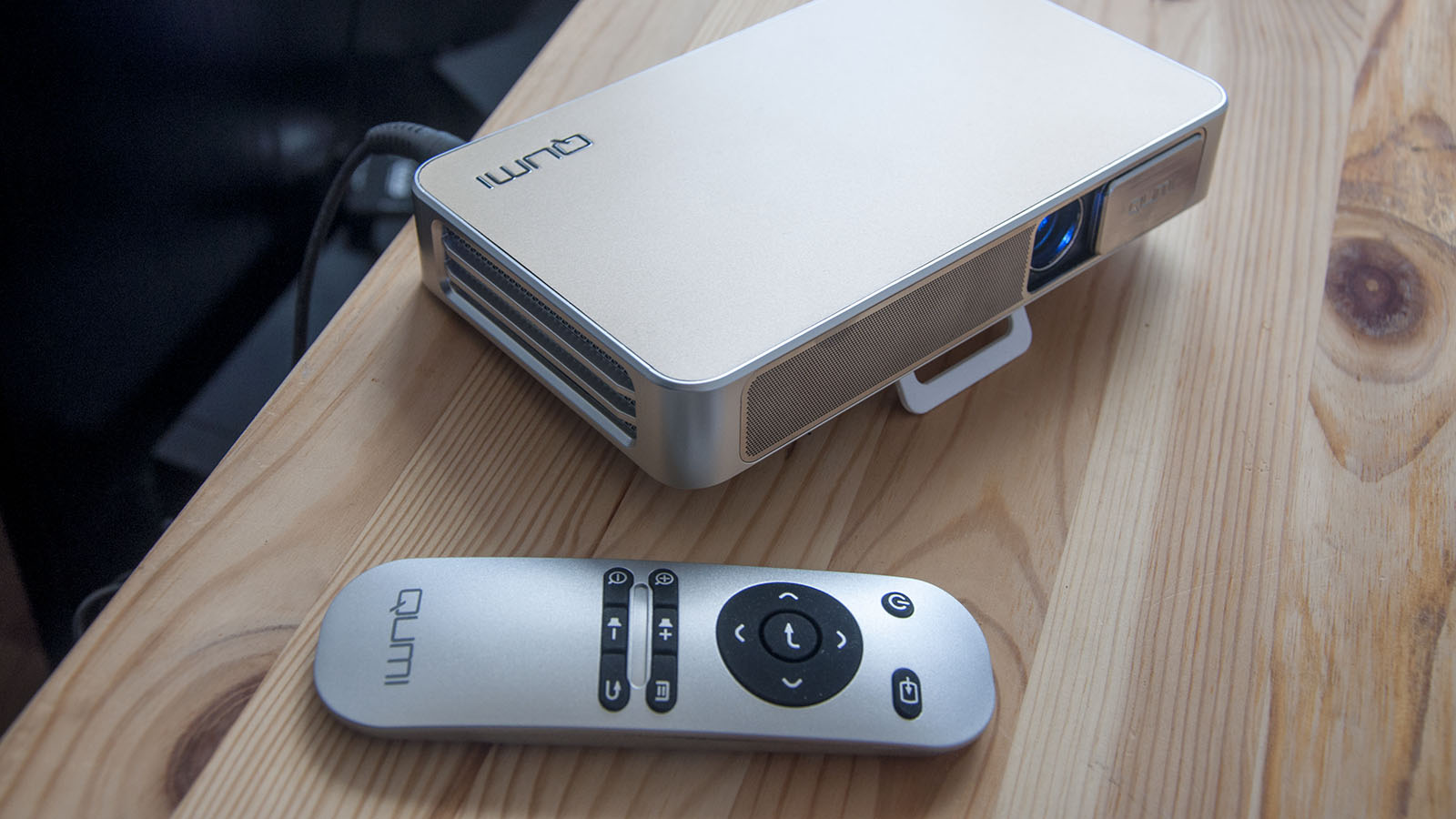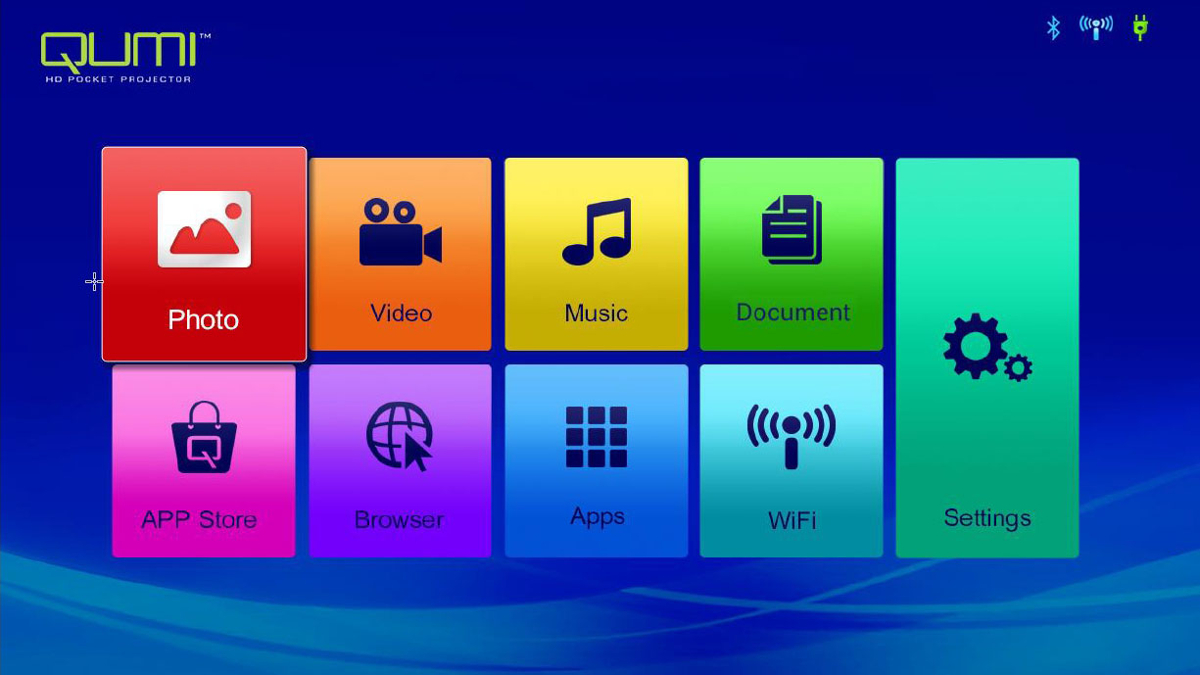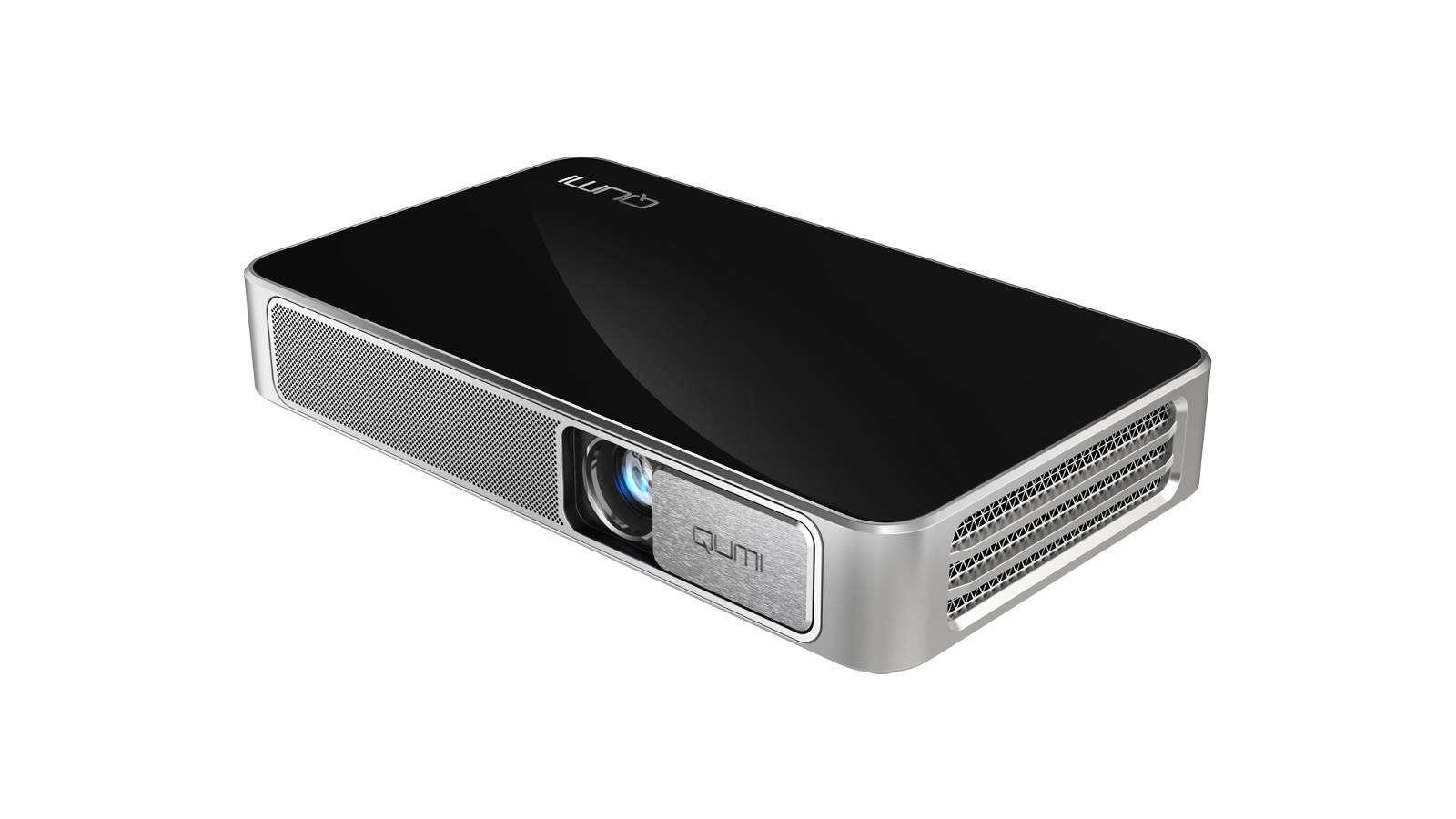Why you can trust TechRadar
Android issues
To avoid having to fashion an operating system, Vivitek has fallen back on Android as the underlying software infrastructure. There’s a custom launcher sitting on top of Android 4.4.2 (KitKat) all driven by a quad-core 1.5GHz ARM CPU with 1GB of RAM and 8GB of flash storage.
Vivitek wasn't magnanimous enough to give its platform access to the official Google Play store, but there are a few apps available for the likes of Netflix and YouTube.
That said, the YouTube tool is a nasty ‘YouTube for TV’ release that can’t play HD content and seems to have a predilection for Chinese content.
You can side-load applications using a microSD card. But how well they’ll work is something of a lottery.
We installed Gmail successfully, but couldn’t get a Google account working to make it operational. With apps that do work, despite the device having a reasonably powerful ARM CPU, the Android experience is often sluggish. Using YouTube, in particular, can be a painfully glacial exercise, for no obvious good reason.
By using a relatively old (2013) Android release, the vendor also missed out on some critical functionality, like inherent casting.
To provide the latter functionality Vivitek pre-installed a software casting alternative called HappyCast. For this to work the Android device must also have the tool installed (although it’s worth noting that it does cast games as a bonus).
The OS is an area where Vivitek could make some valuable improvements, as a Play Store-connected version of Android would be a very desirable addition to this projector.
What’s frustrating is that a 1080p MKV file accessed through a microSD card or a USB storage device will play back flawlessly using the built-in Android video player. That shows the hardware has the capabilities it needs, should the software side of this equation ever properly balance.

Illumination
A historical issue with projectors has been the lifespan of their bulbs, which are often as little as 2,000 hours use before a replacement is required.
The Qumi Q3 Plus addresses that point by using an LED light source, and Vivitek expects that bulb to last 30,000+ hours before it expires. That’s 20 years of longevity assuming four hours a night usage, should the rest of the device stand up to that prolonged usage.
That is the effective lifespan of the device because the LED can’t be replaced if it fails.
Another useful detail about this design is that the Qumi Q3 Plus isn’t a short-throw projector. It surprised us how far back we needed to be in order to get the 100-inch screen that’s referred to in Vivitek’s promotional material.
The throw ratio is 1.66 to 1, translating into a 15-foot throw to create a 100-inch projection, though with daylight outside you’d need to shut all blinds or curtains to see an image that size with full clarity.
Dropping the projected width to 60-inch reduces the throw to 8-foot, and is also highly readable without aggressively darkening the room.
It’s worth noting that many projector makers quote the Lumen output of their light source, rather than the light projected back off the wall, which can be radically different.
In our testing, we projected white and black images onto a white painted surface in a blacked-out room, and used a light meter to record the projected light levels.
Balancing white against black results and factoring the square meters of the projection, we estimated that the Q3 Plus generates around 145 Lumens when using the ‘bright’ display mode (Qumi’s spec rates the brightness at 500 Lumens).
There is an even brighter ‘user mode’, although the reduced contrast at greater than 80% brightness makes this of limited value.
It’s also significantly brighter when powered directly compared to battery power, where the amount of light drops by about a third. That’s something to consider if you intend to project somewhere with lots of natural light.
The claimed two hour battery life is also mildly optimistic, although to be fair, it’s rated as ‘up to two hours’. In our testing, the device usually gave out somewhere between 95 and 100 minutes.
While still a useful amount of longevity, it’s not quite enough to watch a typical movie all the way through.

Final verdict
As portable projectors go, the Qumi Q3 Plus is an elegant looking solution that delivers a sharp and colorful image at short range – even when operating from the internal battery.
Vivitek’s decision to use Android as the operating system was a good one, even if its software engineering leaves many things to be desired.
The Q3 Plus won’t generate an enormous projection that’s visible in bright sunlight, but then the projectors capable of doing this aren’t pocket-sized, and neither are they battery powered.
- We’ve picked out the best business projectors of 2017
Mark is an expert on 3D printers, drones and phones. He also covers storage, including SSDs, NAS drives and portable hard drives. He started writing in 1986 and has contributed to MicroMart, PC Format, 3D World, among others.

